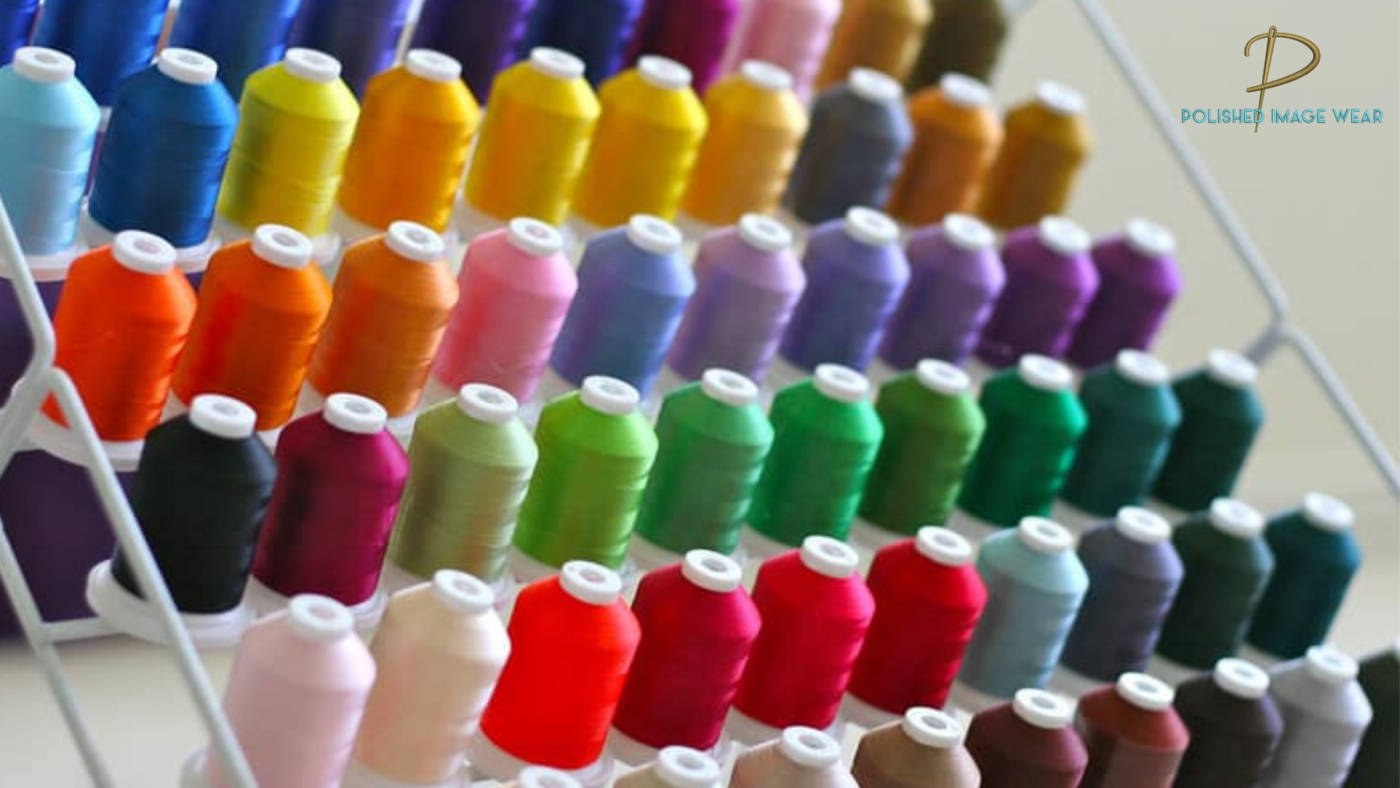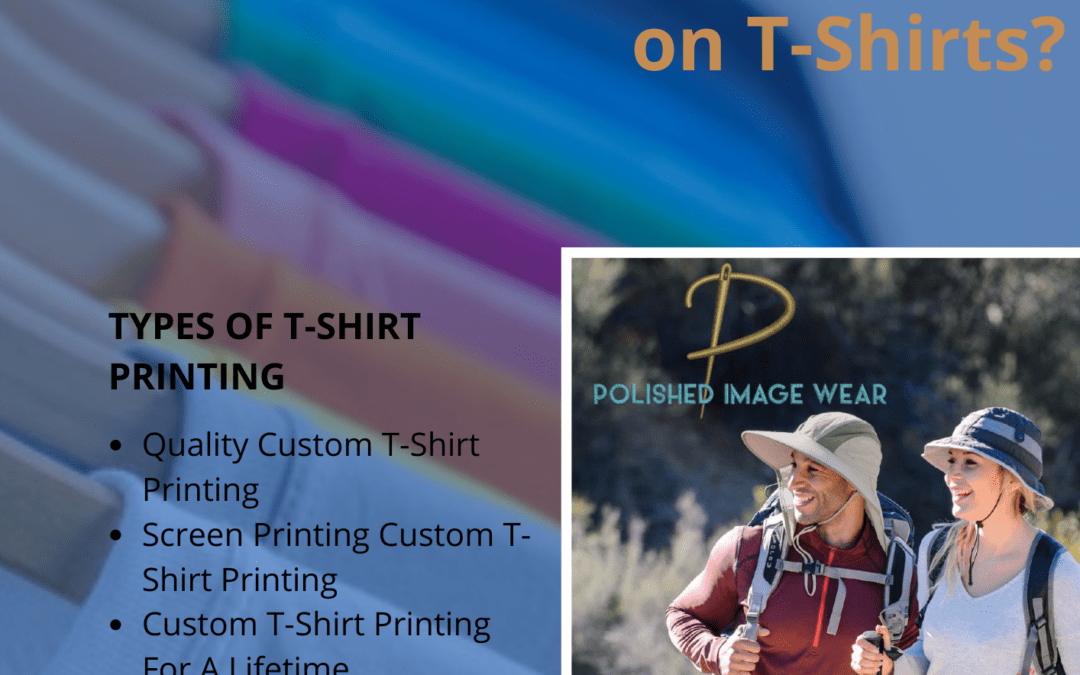Are you looking for a way to show off your personality or support a cause you care about? Printing your own t-shirt is a great way to do that! You can express yourself in a unique way, and you can also support causes you care about by printing t-shirts with messages that promote them. Printing your own t-shirt is much easier than you might think.
The famous types of printing on T-shirts include:
Direct-to-garment (DTG) printing
Direct-to-garment (DTG) printing is a process of printing on textiles using specialized inkjet technology. DTG printers have the ability to print on a wide variety of fabrics, including t-shirts, hoodies, baby clothes, and more. The process is simple: a design is created in a graphics program, like Adobe Photoshop, and then exported to a DTG-compatible file format. The design is then printed onto the garment using a DTG printer.
The benefits of DTG printing are many, such as:
- DTG printing is a great way to produce small batches of shirts with full-color designs.
- This printing is fast and efficient, with most designs taking only a few minutes to print.
- DTG printing is versatile, with the ability to print on a wide variety of fabrics.
- It is relatively affordable, with most designs costing only a few dollars to print.
If you’re thinking about starting a t-shirt business or expanding your current business to include t-shirt printing, DTG printing is a great option to consider.
Screen Printing
When it comes to printing t-shirts, there are a few different methods that can be used. One of the most popular methods is screen printing. Screen printing is a printing technique that uses a mesh screen to transfer ink onto a garment. This printing method is perfect for t-shirts because it allows for a high level of detail and can be done quickly. Screen printing is often used for t-shirt designs that are complex or have a lot of colors. The process of screen printing begins with the creation of a stencil. Once the stencil is created, it is placed on the screen. Ink is then placed on top of the stencil and forced through the mesh screen using a squeegee. The ink is then transferred onto the garment.
Screen printing is a popular printing method because it is very versatile. It can be used on a variety of different fabrics including cotton, polyester, and nylon. Screen printing can also be done on both light and dark garments.
If you are looking for a printing method that will allow you to create high-quality t-shirts, then screen printing is the perfect option for you.
Sublimation Printing
Sublimation printing is a digital printing technology that uses heat to transfer dye-sublimated inks onto materials such as apparel, ceramic mugs, cell phone covers, and more. The end result is a vibrant, full-color print that won’t crack, peel, or fade over time. This printing process begins with a digital file of your design, which is then printed onto a transfer paper using sublimation inks. The inks are transferred to the substrate at high temperatures, causing them to vaporize and penetrate the fabric or other material. As the inks cool, they solidify and fuse with the material, resulting in a permanent, full-color print.
Sublimation printing is an ideal solution for businesses and individuals looking for high-quality, full-color prints that won’t crack, peel, or fade over time. This printing method is also perfect for products that will be subject to regular wear and tear, as the prints are resistant to scratches and scuffs.
If you’re interested in sublimation printing for your business or next event, contact a local printing company to get started.
Heat Transfer Printing
When it comes to printing technology, there are several different methods that can be used to transfer an image onto a substrate. One of the most popular methods is heat transfer printing, which is a process that uses heat to transfer an image onto a substrate.
Heat transfer printing is a popular choice for a variety of applications, including t-shirts, mouse pads, and ceramic tiles. The process is relatively simple and can be performed with a variety of different types of printers.
The first step in heat transfer printing is to create an image that will be printed onto the substrate. This image can be created using a variety of different software programs, including Adobe Photoshop and Illustrator. Once the image is created, it will need to be saved as a print-ready file.
The next step is to print the image onto a transfer paper. There are a variety of different transfer papers available, but it is important to choose a paper that is compatible with the type of printer being used. Once the transfer paper is loaded into the printer, the image will be printed onto the paper.
After the image is printed onto the transfer paper, it will need to be cut out. The best way to do this is to use a pair of scissors. Once the image is cut out, it will need to be placed onto the substrate.
The next step is to apply heat to the substrate. This can be done with a heat press or an iron. It is important to make sure that the substrate is completely covered with the transfer paper before applying heat.
Once the substrate is heated, the image will be transferred onto the substrate. This process is complete when the image is cool to the touch.
Heat transfer printing is a great way to transfer an image onto a substrate. The process is relatively simple and can be performed with a variety of different types of printers.
Vinyl Cutting
Vinyl cutting is a fantastic way to make your own unique designs and patterns on a wide range of materials. Whether you’re looking to add a personal touch to your home décor, create a one-of-a-kind gift, or make a statement with your wardrobe, vinyl cutting is a great way to do it. Vinyl cutting machines are relatively inexpensive and easy to use, making them a great option for anyone who wants to get started with this fun and creative hobby.
What is Vinyl Cutting?
Vinyl cutting is the process of using a vinyl cutter to create custom designs and shapes out of vinyl. Vinyl cutters are small, handheld machines that look a bit like a cross between a pen and a pair of scissors.
To use a vinyl cutter, you first need to create a design. This can be done with any graphics program, such as Adobe Photoshop or Illustrator. Once you have your design ready, you’ll need to print it out on a sheet of vinyl.
Most vinyl cutters can only cut a single color of vinyl at a time, so if your design is multi-colored, you’ll need to print it out on multiple sheets of vinyl and then cut each color out separately.
Once your design is printed on the vinyl, you’ll need to load it into the vinyl cutter. Then, you simply follow the cutting path that you created in your design program to cut out your design.
If you’re looking for a unique and affordable way to add some personality to your things, vinyl cutting is a great option.
What Materials Can You Cut With a Vinyl Cutter?
Vinyl cutters can cut a variety of different materials, but the most popular material to cut with a vinyl cutter is vinyl itself.
Vinyl is a thin, flexible, and durable material that comes in a wide range of colors and patterns. You can find vinyl in sheets or rolls at most craft stores.
In addition to vinyl, you can also use a vinyl cutter to cut paper, cardstock, fabric, and even some types of wood.
How to Create Your Own Designs

Once you have a vinyl cutter, you’ll need to create your own designs to cut out. If you’re not a graphic designer, don’t worry!
There are a few easy ways to create simple designs for vinyl cutting. One popular method is to use a die-cutting machine to create shapes out of vinyl.
Another easy way to create designs is to use a vinyl stencil. You can purchase pre-made stencils, or you can create your own by cutting shapes out of vinyl with a vinyl cutter.
Finally, you can also find a wide variety of free design templates online that you can use for your vinyl cutting projects.
How to Apply Your Vinyl Cutouts
Once you have your vinyl cutouts, you’ll need to apply them to your project surface. If you’re working with vinyl, the process is pretty simple.
Just peel the backing off of your vinyl cutout and stick it to your project surface. For best results, use a vinyl transfer tape to apply your vinyl cutouts.
If you’re working with other materials, such as paper or cardstock, the process is a bit more involved.
You’ll need to use an adhesive to attach your vinyl cutouts to your project surface. For best results, use a repositionable adhesive so that you can move your vinyl cutouts around until they’re in the perfect spot.
